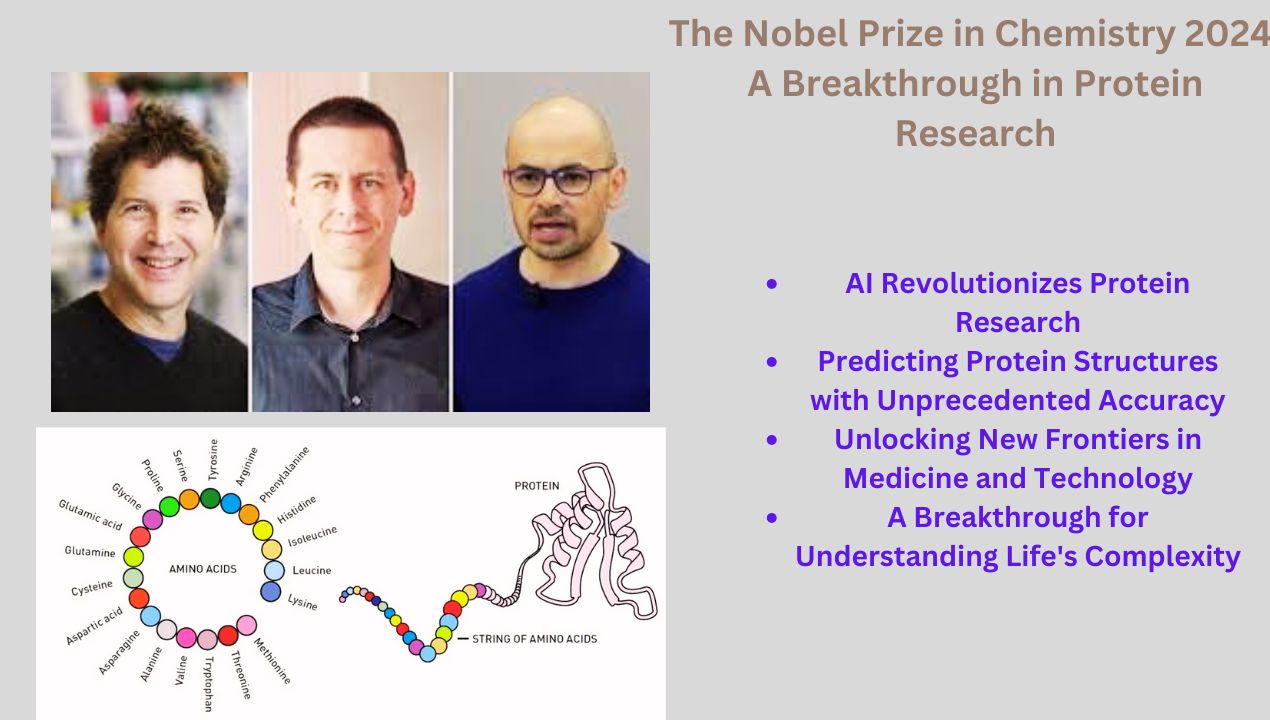Decoding Life’s Building Blocks: AI Predicts 200 Million Protein Structures
Introduction
The Royal Swedish Academy of Sciences has announced the winners of the prestigious 2024 Nobel Prize in Chemistry. This year, the award has been shared equally between three scientists: David Baker, Demis Hassabis, and John M. Jumper. Their groundbreaking research in the field of protein structure and design has revolutionized our understanding of life’s building blocks.
David Baker: A Pioneer in Computational Protein Design
David Baker, a professor at the University of Washington, has been honored for his pioneering work in computational protein design. His research group has developed innovative methods to create entirely new proteins, which have never existed before in nature. These novel proteins have potential applications in various fields, including medicine, materials science, and environmental engineering.
Demis Hassabis and John M. Jumper: Predicting Protein Structures with AI
Demis Hassabis, CEO of Google DeepMind, and John M. Jumper, a senior research scientist at the same organization, have been recognized for their groundbreaking contributions to protein structure prediction. Their AI model, AlphaFold2, has revolutionized the field by accurately predicting the structures of millions of proteins. This breakthrough has significant implications for understanding diseases, developing new drugs, and designing materials with specific properties.
The Importance of Proteins
Proteins are essential macromolecules that play crucial roles in all biological processes. They are composed of chains of amino acids, and their unique structures determine their functions. Understanding protein structures is key to understanding how life works at the molecular level.
The Impact of the Winners’ Research
The research of Baker, Hassabis, and Jumper has had a profound impact on various fields. Their work has led to a better understanding of antibiotic resistance, the development of enzymes that can decompose plastic, and the creation of new materials with tailored properties.
Previous Indian Nobel Laureates in Chemistry
Venkatraman Ramakrishnan, an Indian-born scientist, was awarded the Nobel Prize in Chemistry in 2009. Ramakrishnan, who holds dual nationality of Britain and the United States, shared the prize with Thomas A. Steitz and Ada E. Yonath for their research on the structure and function of ribosomes.
The Nobel Prize in Chemistry
The Nobel Prize in Chemistry was established in 1900 and was first awarded in 1901. The prize is awarded annually to individuals who have made outstanding contributions to the field of chemistry.
Conclusion
The 2024 Nobel Prize in Chemistry is a well-deserved recognition of the groundbreaking work done by David Baker, Demis Hassabis, and John M. Jumper. Their research has significantly advanced our understanding of proteins and their role in life. Their achievements have opened up new avenues for scientific exploration and have the potential to lead to significant breakthroughs in various fields.
FAQs:
1. Who were the winners of the 2024 Nobel Prize in Chemistry?
- David Baker, Demis Hassabis, and John M. Jumper were awarded the Nobel Prize in Chemistry for their groundbreaking work in protein design and structure prediction.
2. What were the key contributions of each Nobel laureate?
- David Baker pioneered computational protein design, creating entirely new proteins.
- Demis Hassabis and John M. Jumper developed AlphaFold2, an AI model that accurately predicts protein structures.
3. Why are proteins important?
- Proteins are the building blocks of life, controlling essential chemical reactions and serving as hormones, antibodies, and signal substances.
4. What is the significance of predicting protein structures?
- Predicting protein structures is crucial for understanding diseases, developing new drugs, and designing materials.
5. How did AlphaFold2 revolutionize protein structure prediction?
- AlphaFold2 accurately predicted the structures of millions of proteins, a breakthrough that had previously been elusive.
6. What are the potential applications of protein design and structure prediction?
- Potential applications include developing new drugs, creating materials with specific properties, and understanding antibiotic resistance.
7. What is the history of the Nobel Prize in Chemistry?
- The Nobel Prize in Chemistry was established in 1900 and was first awarded in 1901.
8. Who was the first woman to win the Nobel Prize in Chemistry?
- Marie Curie was the first woman to win the Nobel Prize in Chemistry, in 1911.
9. What is the significance of the Nobel Prize?
- The Nobel Prize is a prestigious award that recognizes exceptional achievements in various fields, including chemistry.
10. What is the future of protein research?
- The discoveries made by Baker, Hassabis, and Jumper have opened up new avenues for research and hold great promise for future advancements in fields like medicine and technology.
OTHER LINKS:
DRDO Successfully Tests 4th Generation VSHORADS Air Defence System





